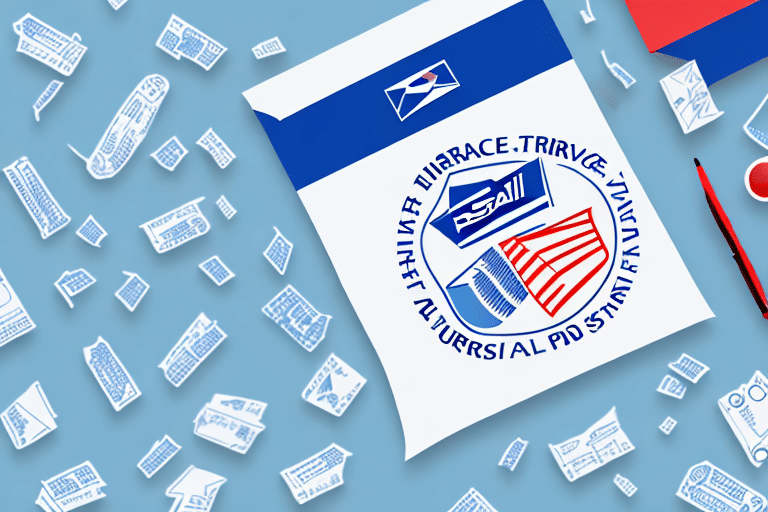What is USPS Insurance?
USPS insurance is a form of protection available for eligible items sent through the mail. It provides financial coverage in case your package is damaged or lost during transit. The insurance amount you purchase determines the reimbursement you receive for the lost or damaged item.
It's important to note that USPS insurance does not cover all items. Some items, such as perishable goods or live animals, are ineligible for coverage. Additionally, certain items may have limited coverage or require additional documentation to be eligible for insurance. Always check with USPS or your shipping provider to ensure your item qualifies for insurance and to understand the terms and limitations of coverage.
Why Do You Need USPS Insurance?
While USPS is generally reliable, there's always a risk of packages getting lost or damaged in transit. Purchasing USPS insurance provides peace of mind that you'll be reimbursed if an unfortunate event occurs. If you're sending high-value items, such as electronics or jewelry, USPS insurance is essential as it can potentially save you from significant monetary loss.
International shipping adds another layer of unpredictability. Packages may be subject to customs inspections, delays, or even theft. Having insurance can protect you from potential losses during the shipping process.
For businesses that frequently ship products, USPS insurance ensures protection from financial losses due to lost or damaged packages. This helps maintain customer satisfaction and safeguards your business reputation.
How Much Does USPS Insurance Cost?
The cost of USPS insurance varies based on the item's value and the insurance amount you choose. USPS offers insurance coverage up to $5,000 for domestic shipments and up to $2,499.99 for international shipments. Depending on the item's value, insurance costs can range from a few dollars to over $100.
USPS provides different types of insurance, such as Priority Mail Express Insurance and Priority Mail Insurance, each with varying coverage limits and costs. It's important to note that USPS insurance only covers the value of the item being shipped and does not include shipping costs.
Customers can purchase USPS insurance at the time of shipping, either online or at a USPS retail location. It's recommended to insure valuable items to protect against loss or damage during transit. Always read and understand the terms and conditions of USPS insurance to ensure your item is eligible for coverage.
How to Determine the Value of Your Package for Insurance
To accurately determine the value of your package for USPS insurance purposes, calculate the item's worth, excluding shipping costs. USPS insurance only covers the item's value, not any shipping or handling fees, so it's crucial to assess the item's value correctly.
One method is to research the current market value of the item by searching online marketplaces or consulting with industry experts. If you have a receipt or invoice, it can also help determine the item's value.
Consider the item's condition as well. A new item in its original packaging may be worth more than a used or damaged one. Take into account any wear and tear or damage when determining the value for insurance purposes.
Eligible Items for USPS Insurance
USPS insurance covers most items that are legally mailable and not on the prohibited items list. Examples of eligible items include:
- Electronics
- Jewelry
- Collectibles
- Artwork
However, perishable items, live animals, and cash or currency are not covered by USPS insurance. Additionally, some items may require additional packaging to qualify for insurance coverage.
Prohibited Items
Items prohibited by law, such as illegal drugs, explosives, and firearms, are not covered by USPS insurance.
Filing a Claim with USPS for Insured Packages
If your insured package is lost or damaged, you can file a claim with USPS to receive reimbursement. Claims can be filed online through the USPS website or in person at your local USPS office. It's crucial to file the claim within the specified timeframe, typically within 60 days for domestic claims and within 90 days for international claims.
When filing a claim, you'll need to provide documentation such as proof of value and proof of insurance. Be aware that the reimbursement amount may be limited to the declared value of the package. If the full value wasn't declared, you might not receive full reimbursement for damages or losses.
USPS may require an inspection of the package and its contents before approving the claim. It's advisable to keep all packaging and documentation related to the shipment until the claim is resolved.
Purchasing USPS Insurance: Key Considerations
When buying USPS insurance, consider the following factors:
- Item's Value: Ensure the insurance amount covers the item's full value.
- Cost of Insurance: Compare the insurance cost against the item's value to determine if it's worth the investment.
- Proper Packaging: Properly package items to prevent damage during transit, which can affect insurance claims.
- Tracking Services: Use USPS tracking services to monitor your package and receive alerts about its status.
Additionally, verify that the item you're shipping is not prohibited or restricted. Check the USPS prohibited items list before purchasing insurance.
Alternatives to USPS Insurance
If USPS insurance doesn't meet your needs, consider the following alternatives:
- Private Shipping Companies: Companies like FedEx and UPS offer their own insurance options. Compare their prices and policies to find the best fit.
- Self-Insurance: Businesses that frequently ship high-value items might opt to self-insure, absorbing the risk of potential loss or damage.
- Credit Card Shipping Insurance: Some credit card companies offer shipping insurance as a perk. This can be a convenient option, but always read the fine print to understand the coverage limitations.
Understanding USPS Insurance Policies
Before purchasing USPS insurance, thoroughly read the policy details. Pay attention to coverage limitations, deductibles, exclusions, and any special requirements for certain items. Understanding these details helps you make an informed decision about the appropriate level of insurance for your package.
Remember, USPS insurance covers only the cost of the item being shipped, not any sentimental or emotional value. Additionally, certain items like perishable goods or live animals may not qualify for insurance coverage.
Evaluate the cost of USPS insurance against other available options to ensure you're getting the best value for your money.
Saving Money on USPS Insurance
USPS offers several ways to save on insurance costs:
- Discount Programs: Businesses that frequently ship packages can take advantage of USPS discount programs to lower insurance rates.
- Bundling Packages: Shipping multiple packages together can result in lower insurance rates per package.
- Online Shipping: Purchasing insurance online often comes with discounts compared to in-person purchases at USPS retail locations.
By leveraging these options, you can reduce the overall cost of insurance while still ensuring the protection of your valuable shipments.
In conclusion, purchasing USPS insurance is vital for protecting high-value items during transit. By understanding the pricing, policies, and available discounts, you can make informed decisions to safeguard your packages effectively.
For more detailed information on USPS insurance policies and to access their services, visit the official USPS website.






















